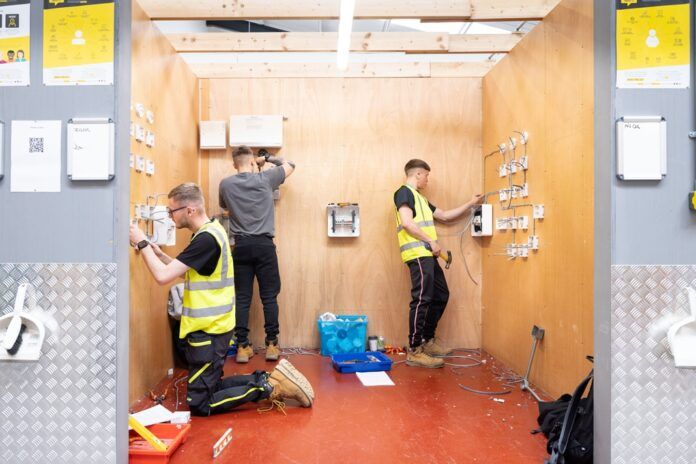
A new report from JTL has revealed that England’s electrical workforce in England has declined by 26.2% since 2018, falling from 214,200 to 158,000 electricians in 2024.
The report, titled ‘Powering the Future: Securing a Skilled Electrical Workforce to Deliver Growth’, cited that the shortfall could jeopardise delivery of major housing, clean energy, infrastructure and AI projects.
This trend is expected to continue without targeted intervention, it cited, with projections indicating a further decline of up to 32% by 2038.
The report found that despite a recent uptick in apprenticeship starts, current level of approximately 7,540 per year is insufficient to replace those leaving the workforce. To stabilise electrical workforce numbers and maintain competence in the industry, the report stated that over 10,500 new apprenticeship starts are needed annually.
JTL said that the report also raised concerns about the skill and competence levels within the workforce. Maintaining safety standards in this highly regulated sector requires a focus not only on growing the number of workers but also on ensuring they are fully qualified, it said.
Alongside these findings, the report launched a national projection model for the electrical industry. The model is designed to offer long-term, data-driven insight into workforce size, skills levels and sector resilience over a 15-year horizon.
It was developed by JTL in collaboration with industry partners, including the ECA, TESP, JIB, NET, NICEIC and Electrical Safety First.
The model captured volumes of electricians and competence within the workforce, defined as ‘Skilled Person Density’. JTL added that it enables users to model how different policy interventions will impact both workforce size and Skilled Person Density over time. The model also offers a clear roadmap to reversing the decline and securing a skilled electrical workforce for the future.
According to the report, significant improvements in apprenticeship achievement rates and sustained uptake of alternative qualification routes are required. This is to ensure that the overall Skilled Person Density within the workforce meets employer needs, it noted.
The report highlighted that current workforce planning and policy are misaligned with future demand. It cited that government strategies do not yet reflect the scale of skilled labour needed to deliver planned housing, infrastructure and clean energy projects. Without an urgent policy shift and systemic investment, it warned that the sector could face worsening skill shortages, cost escalation and missed targets.
Chris Claydon, CEO of JTL, said: “We are at a tipping point. The demand for skilled electricians is rising, but the workforce is shrinking. If we don’t act now, the UK will struggle to meet its housing, clean energy and infrastructure goals. Apprenticeships remain the gold standard for training competent electricians, but we need a comprehensive policy shift—better funding, stronger employer incentives and coordinated leadership to reverse the trend.”
